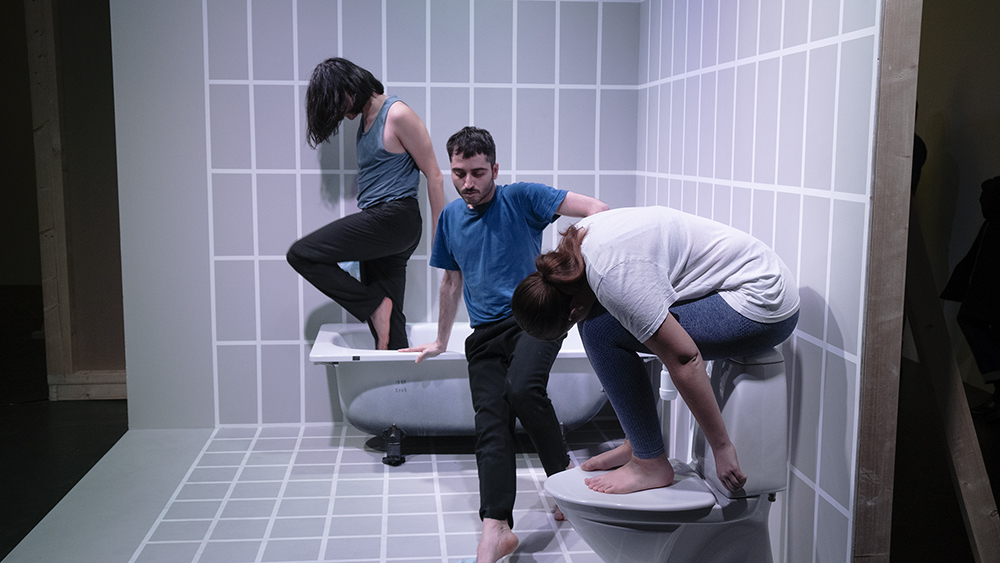Dokumentation från performance på Lilith Performance Studio. Foto Petter Pettersson.
Text in English below
Dokumentation av när verket Time Waste visades som en performance på Lilith Performance Studio som en del av Five Corners. Verket visar en städkoreografi med dansare från i en mindre kopia av fullskalemodellen från forskningsprojektet. Verket utgår från en forskningsrapport från 1985 av en kvinnlig arkitekt som undersökte hur det gick att bygga ett mer lättstädat badrum. Forskaren tog sina egna erfarenheter som småbarnsförälder och frustrationen inför all tid det tog att städa. För att undersöka hur ett mer lättstädat badrum skulle kunna se ut utfördes försökspersoner olika städningar i ett testbadrum. Avhandlingen blev sedan förlöjligad i media, och ifrågasatt huruvida städning kunde vara ett ämne värt att forska på i fyra år, men hennes resultat ledde sedan till att byggbranschen ändrade svensk standard för badrum. Dansarnas rörelser utgår från de fotografier av städningar från försökspersonerna som finns i avhandlingen. Dansarna i performance är Corrado Di Lorenzo, Olivia Klang and Daniel Persson.
Documentation of when the work Time Waste was shown as a performance at Lilith Performance Studio as part of Five Corners. The work shows a sort of cleaning choreography with dancers from in a smaller copy of the full-scale model from the research project. The work is based on a research report from 1985 by a female architect who investigated how it was possible to build a bathroom that was easy to clean. The researcher took her own experiences as a parent of young children and the frustration of all the time it took to clean. To investigate how an easier-to-clean bathroom could look like, subjects performed different cleanings in a test bathroom. The thesis was then ridiculed in the media, and questioned whether cleaning could be a topic worth researching for four years, but her results then led to the construction industry changing the Swedish standard for bathrooms. The dancers’ movements are based on the photographs of cleanings from the test subjects that are in the thesis. The dancers in the performance are Corrado Di Lorenzo, Olivia Klang and Daniel Persson.






